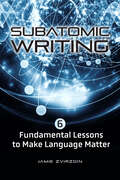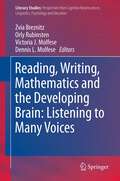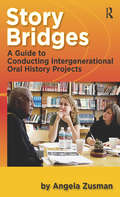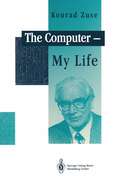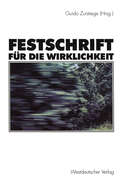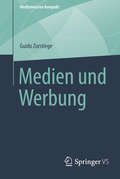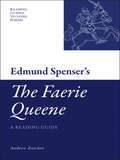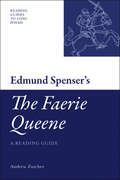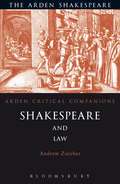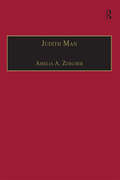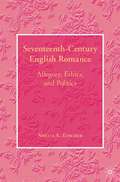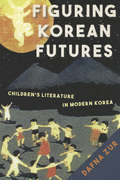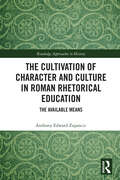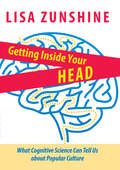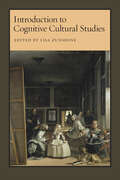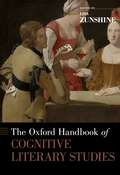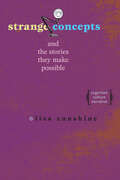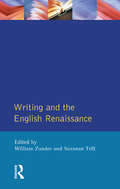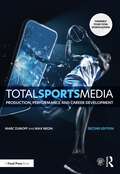- Table View
- List View
Subatomic Writing: Six Fundamental Lessons to Make Language Matter
by Jamie ZvirzdinSee science writing fundamentals afresh through a subatomic lens!In Subatomic Writing, Johns Hopkins University instructor Jamie Zvirzdin goes bravely into uncharted territory by offering a totally new kind of guide for writing about science—from the subatomic level up! Subatomic Writing teaches readers that the building blocks of language are like particles in physics. These particles, combined and arranged, form something greater than their parts: all matter in the literary universe. The six levels of language covered in this guide create writing that illuminates and energizes the reader to feel, learn, change, and act. This interdisciplinary approach helps scientists, science writers, and editors improve their writing in fundamental areas as they build from the sounds in a word to the pacing of a paragraph. These areas include• Sound and sense• Word classes• Grammar and syntax• Punctuation• Rhythm and emphasis• Pacing and coherenceEqually helpful for students who need to learn how to write clearly about science and scientists who need to hone their writing skills to create more effective course material, papers, and grant applications, this guide builds confidence in writing abilities as old skills are taught in new, exciting ways. Each lesson provides exercises that build on each other, strengthening readers' capacity to communicate ideas and data, all while learning basic particle physics along the way.
Reading, Writing, Mathematics and the Developing Brain: Listening to Many Voices (Literacy Studies #6)
by Zvia Breznitz, Orly Rubinsten, Victoria J. Molfese and Dennis L. MolfeseThis valuable addition to the literature offers readers a comprehensive overview of recent brain imaging research focused on reading, writing and mathematics—a research arena characterized by rapid advances that follow on the heels of fresh developments and techniques in brain imaging itself. With contributions from many of the lead scientists in this field, a number of whom have been responsible for key breakthroughs, the coverage deals with the commonalities of, as well as the differences between, brain activity related to the three core educational topics. At the same time, the volume addresses vital new information on both brain and behavior indicators of developmental problems, and points out the new directions being pursued using current advances in brain imaging technologies as well as research-based interventions. The book is also a tribute to a new Edmund, J Safra Brain center for the study of learning Disabilities at the University of Haifa-Israel.
Story Bridges: A Guide for Conducting Intergenerational Oral History Projects (Practicing Oral History)
by Angela ZusmanAngela Zusman offers an informative guidebook with step-by-step directions for planning and implementing intergenerational oral history projects, using youth to interview elders. An expert on these programs, Zusman uses her experiences and those of other oral historians to show how community projects are organized, youthful historians located and trained, interviews conducted, and the project archived for future community needs. Included are a variety of sample documents and case studies designed to ease the process for the uninitiated.
Story Bridges: A Guide for Conducting Intergenerational Oral History Projects (Practicing Oral History #1)
by Angela ZusmanAngela Zusman offers an informative guidebook with step-by-step directions for planning and implementing intergenerational oral history projects, using youth to interview elders. An expert on these programs, Zusman uses her experiences and those of other oral historians to show how community projects are organized, youthful historians located and trained, interviews conducted, and the project archived for future community needs. Included are a variety of sample documents and case studies designed to ease the process for the uninitiated.
Festschrift für die Wirklichkeit
by Guido ZurstiegeDer Band eröffnet ein möglichst breites Spektrum an aktuellen Zugängen aus Kunst, Literatur und Wissenschaft zu der Frage, was über die Wirklichkeit an der Schwelle zum 21. Jahrhundert (noch) gesagt werden kann. Wie stellt sich heute der Philosophie die grundsätzliche Frage nach der Erreichbarkeit des Seins, der Realität, der Wirklichkeit? Mit welchen Problemen sieht sich die Medien- und Kommunikationswissenschaft angesichts der zunehmenden Fiktionalisierung von Medienwirklichkeiten konfrontiert? Worauf verweisen die Bilder der Medien noch, wenn nicht auf sich selbst? Wie reagieren die Kunst und die Literatur auf die gesellschaftliche Beschlagnahme ihrer Domäne, der Fiktionalität? Leben wir bereits in einer künstlichen Gesellschaft ohne Bedarf an künstlerischer Kontingenzerzeugung? Was ist heute noch wirklich wirklich?
Medien und Werbung (Medienwissen kompakt)
by Guido ZurstiegeIn den vergangenen Jahrzehnten hat die Werbung ihr Gesicht verändert. Sie macht "Unterhaltungs- und Informationsgeschenke", die von vielen Rezipienten nicht als geheime Verführung wahrgenommen werden. Wie ist es dazu gekommen? Welche Kräfte treiben die Entwicklung des Werbesystems an? Welche Formen der Werbung bringen sie hervor? Und natürlich: Wie wirkt Werbung unter diesen Bedingungen heute? Das sind die zentralen Fragen dieses Buches.
Edmund Spenser's 'The Faerie Queene': A Reading Guide
by Andrew ZurcherThis Guide will help new readers to understand and enjoy The Faerie Queene, drawing attention to its various ironies, its self-reflexive construction, its visual emphasis and the timeless ethical, political, and literary questions that it asks of all of us. The book includes key selections from the poem (each accompanied by a headnote, commentary and glosses), historical and critical discussions, teaching and learning plans and a guide to further resources in electronic and print media
Edmund Spenser's 'The Faerie Queene': A Reading Guide (Reading Guides to Long Poems)
by Andrew ZurcherIntroduces a Renaissance masterpiece to a modern audience.
Shakespeare and Law (Arden Critical Companions)
by Andrew ZurcherReaders of Shakespeare's language, from the playhouse to the classroom, have long been aware of his peculiar interest in legal words and concepts - Richard II's two bodies, Hamlet's quiddities and quillets, Pandarus' peine forte et dure. In this new study, Andrew Zurcher takes a fresh, historically sensitive look at Shakespeare's meticulous resort to legal language, texts, concepts, and arguments in a range of plays and poems. Following a preface that situates Shakespeare's life within the various legal communities of his Stratford and London periods, Zurcher reconsiders the ways in which Shakespeare adapts legal language and concepts to figure problems about being, knowing, reading, interpretation, and action.In challenging new readings of plays from King John and Henry IV to As You Like It and Hamlet, Shakespeare and Law reveals the importance of early modern common legal thinking to Shakespeare's representations of inheritance, possession, gift-giving, oath-swearing, contract, sovereignty, judgment, and conscience - and, finally, to our own reception and interpretation of his works.
Shakespeare and Law (Arden Critical Companions)
by Andrew ZurcherReaders of Shakespeare's language, from the playhouse to the classroom, have long been aware of his peculiar interest in legal words and concepts - Richard II's two bodies, Hamlet's quiddities and quillets, Pandarus' peine forte et dure. In this new study, Andrew Zurcher takes a fresh, historically sensitive look at Shakespeare's meticulous resort to legal language, texts, concepts, and arguments in a range of plays and poems. Following a preface that situates Shakespeare's life within the various legal communities of his Stratford and London periods, Zurcher reconsiders the ways in which Shakespeare adapts legal language and concepts to figure problems about being, knowing, reading, interpretation, and action.In challenging new readings of plays from King John and Henry IV to As You Like It and Hamlet, Shakespeare and Law reveals the importance of early modern common legal thinking to Shakespeare's representations of inheritance, possession, gift-giving, oath-swearing, contract, sovereignty, judgment, and conscience - and, finally, to our own reception and interpretation of his works.
Judith Man: Printed Writings 1500–1640: Series I, Part Three, Volume 2 (The Early Modern Englishwoman: A Facsimile Library of Essential Works & Printed Writings, 1500-1640: Series I, Part Three)
by Amelia A. ZurcherAn Epitome of the History of Faire Argenis and Polyarchus is Judith Man's English translation of a 1623 French work by Nicolas Coeffeteau, Histoire de Poliarque et d'Argenis, which is itself an abridgement and translation of one of the most widely read fictional works of the seventeenth century, John Barclay's 1621 Latin romance Argenis. An extended political allegory of the rise to power of the French king Henri IV, Barclay's romance is peppered with numerous veiled anecdotes of politics at the English and other European courts and long disquisitions on statecraft and political ethics. It has been assumed that Barclay's work was strictly for a male audience, but Man's translation is evidence that women did in fact read Argenis, and might even suggest that allegorical romance offered women writers and readers an inroad into political discourse.
Judith Man: Printed Writings 1500–1640: Series I, Part Three, Volume 2 (The Early Modern Englishwoman: A Facsimile Library of Essential Works & Printed Writings, 1500-1640: Series I, Part Three)
by Amelia A. ZurcherAn Epitome of the History of Faire Argenis and Polyarchus is Judith Man's English translation of a 1623 French work by Nicolas Coeffeteau, Histoire de Poliarque et d'Argenis, which is itself an abridgement and translation of one of the most widely read fictional works of the seventeenth century, John Barclay's 1621 Latin romance Argenis. An extended political allegory of the rise to power of the French king Henri IV, Barclay's romance is peppered with numerous veiled anecdotes of politics at the English and other European courts and long disquisitions on statecraft and political ethics. It has been assumed that Barclay's work was strictly for a male audience, but Man's translation is evidence that women did in fact read Argenis, and might even suggest that allegorical romance offered women writers and readers an inroad into political discourse.
Seventeenth-Century English Romance: Allegory, Ethics, and Politics
by A. ZurcherOverturning the common characterization of Seventeenth Century English prose romance as an exhausted, imitative genre with little bearing on the evolution of the novel, this book argues that early modern romance was a central forum for exploring the newly pressing moral-philosophical and political problem of self-interest.
Figuring Korean Futures: Children’s Literature in Modern Korea
by Dafna ZurThis book is the story of the emergence and development of writing for children in modern Korea. Starting in the 1920s, a narrator-adult voice began to speak directly to a child-reader. This child audience was perceived as unique because of a new concept: the child-heart, the perception that the child's body and mind were transparent and knowable, and that they rested on the threshold of culture. This privileged location enabled writers and illustrators, educators and psychologists, intellectual elite and laypersons to envision the child as a powerful antidote to the present and as an uplifting metaphor of colonial Korea's future. Reading children's periodicals against the political, educational, and psychological discourses of their time, Dafna Zur argues that the figure of the child was particularly favorable to the project of modernity and nation-building, as well as to the colonial and postcolonial projects of socialization and nationalization. She demonstrates the ways in which Korean children's literature builds on a trajectory that begins with the child as an organic part of nature, and ends, in the post-colonial era, with the child as the primary agent of control of nature. Figuring Korean Futures reveals the complex ways in which the figure of the child became a driving force of nostalgia that stood in for future aspirations for the individual, family, class, and nation.
The Cultivation of Character and Culture in Roman Rhetorical Education: The Available Means (Routledge Approaches to History)
by Anthony Edward ZupancicAt its very center, The Cultivation of Character and Culture in Roman Rhetorical Education: The Available Means is a study of the subtle, organic ways that rhetoric can work to cultivate a particular character. This is an extension of the current work in composition studies, which focus on the ways that writing instruction contributes to the development of individual power and agency in students, combined with an ancient understanding of the ways that students learned to act within a particular, accepted cultural framework. It recognizes and reclaims a lost dimension of rhetoric, a dimension that is conceptually linked to the martial culture of the ancient world, to show how ancient rhetorical theory framed the discipline as an education in thinking, speaking, and acting in ways that were necessary to be both a persuasive speaker and an effective leader. Through close readings and analysis of particular rhetorical exercises, the book shows how rhetorical education shaped characters that were appropriate in the eyes of the dominant culture but were also capable of working independently to progressively alter that culture. In showing the ways that rhetorical education shaped a particular character, the book demonstrates the ways that the combination character, culture, and virtue are vital to leadership in any time.
The Cultivation of Character and Culture in Roman Rhetorical Education: The Available Means (Routledge Approaches to History)
by Anthony Edward ZupancicAt its very center, The Cultivation of Character and Culture in Roman Rhetorical Education: The Available Means is a study of the subtle, organic ways that rhetoric can work to cultivate a particular character. This is an extension of the current work in composition studies, which focus on the ways that writing instruction contributes to the development of individual power and agency in students, combined with an ancient understanding of the ways that students learned to act within a particular, accepted cultural framework. It recognizes and reclaims a lost dimension of rhetoric, a dimension that is conceptually linked to the martial culture of the ancient world, to show how ancient rhetorical theory framed the discipline as an education in thinking, speaking, and acting in ways that were necessary to be both a persuasive speaker and an effective leader. Through close readings and analysis of particular rhetorical exercises, the book shows how rhetorical education shaped characters that were appropriate in the eyes of the dominant culture but were also capable of working independently to progressively alter that culture. In showing the ways that rhetorical education shaped a particular character, the book demonstrates the ways that the combination character, culture, and virtue are vital to leadership in any time.
Getting Inside Your Head: What Cognitive Science Can Tell Us about Popular Culture
by Lisa ZunshineWe live in other people's heads: avidly, reluctantly, consciously, unaware, mistakenly, and inescapably. Our social life is a constant negotiation among what we think we know about each other's thoughts and feelings, what we want each other to think we know, and what we would dearly love to know but don't.Cognitive scientists have a special term for the evolved cognitive adaptation that makes us attribute mental states to other people through observation of their body language; they call it theory of mind. Getting Inside Your Head uses research in theory of mind to look at movies, musicals, novels, classic Chinese opera, stand-up comedy, mock-documentaries, photography, and reality television. It follows Pride and Prejudice’s Mr. Darcy as he tries to conceal his anger, Tyler Durden as he lectures a stranger at gunpoint in Fight Club, and Ingrid Bergman as she fakes interest in horse races in Notorious.This engaging book exemplifies the new interdisciplinary field of cognitive cultural studies, demonstrating that collaboration between cognitive science and cultural studies is both exciting and productive.
Getting Inside Your Head: What Cognitive Science Can Tell Us about Popular Culture
by Lisa ZunshineWe live in other people's heads: avidly, reluctantly, consciously, unaware, mistakenly, and inescapably. Our social life is a constant negotiation among what we think we know about each other's thoughts and feelings, what we want each other to think we know, and what we would dearly love to know but don't.Cognitive scientists have a special term for the evolved cognitive adaptation that makes us attribute mental states to other people through observation of their body language; they call it theory of mind. Getting Inside Your Head uses research in theory of mind to look at movies, musicals, novels, classic Chinese opera, stand-up comedy, mock-documentaries, photography, and reality television. It follows Pride and Prejudice’s Mr. Darcy as he tries to conceal his anger, Tyler Durden as he lectures a stranger at gunpoint in Fight Club, and Ingrid Bergman as she fakes interest in horse races in Notorious.This engaging book exemplifies the new interdisciplinary field of cognitive cultural studies, demonstrating that collaboration between cognitive science and cultural studies is both exciting and productive.
Introduction to Cognitive Cultural Studies
by Lisa ZunshineDrawing on the explosion of academic and public interest in cognitive science in the past two decades, this volume features articles that combine literary and cultural analysis with insights from neuroscience, cognitive evolutionary psychology and anthropology, and cognitive linguistics. Lisa Zunshine’s introduction provides a broad overview of the field. The essays that follow are organized into four parts that explore developments in literary universals, cognitive historicism, cognitive narratology, and cognitive approaches in dialogue with other theoretical approaches, such as postcolonial studies, ecocriticism, aesthetics, and poststructuralism. Introduction to Cognitive Cultural Studies provides readers with grounding in several major areas of cognitive science, applies insights from cognitive science to cultural representations, and recognizes the cognitive approach’s commitment to seeking common ground with existing literary-theoretical paradigms. This book is ideal for graduate courses and seminars devoted to cognitive approaches to cultural studies and literary criticism.Contributors: Mary Thomas Crane, Nancy Easterlin, David Herman, Patrick Colm Hogan, Bruce McConachie, Alan Palmer, Alan Richardson, Ellen Spolsky, G. Gabrielle Starr, Blakey Vermeule, Lisa Zunshine
The Oxford Handbook of Cognitive Literary Studies (Oxford Handbooks)
by Lisa ZunshineThe Oxford Handbook of Cognitive Literary Studies considers, via a variety of methodologies and combinations of interdisciplinary approaches, how the architecture that enables human cognitive processing interacts with cultural and historical contexts. Organized into five parts (Narrative, History, Imagination; Emotions and Empathy; The New Unconscious; Empirical and Qualitative Studies of Literature; and Cognitive Theory and Literary Experience), the volume uses case studies from a wide range of historical periods (from the fourth century BCE to the twenty-first century) and national literary traditions (including South Asian, postcolonial anglophone and francophone, Chinese, Japanese, English, Iranian, Russian, Italian, French, German, and Spanish).
Strange Concepts and the Stories They Make Possible: Cognition, Culture, Narrative
by Lisa ZunshineIn this fresh and often playful interdisciplinary study, Lisa Zunshine presents a fluid discussion of how key concepts from cognitive science complicate our cultural interpretations of "strange" literary phenomena.From Short Circuit to I, Robot, from The Parent Trap to Big Business, fantastic tales of rebellious robots, animated artifacts, and twins mistaken for each other are a permanent fixture in popular culture and have been since antiquity. Why do these strange concepts captivate the human imagination so thoroughly? Zunshine explores how cognitive science, specifically its ideas of essentialism and functionalism, combined with historical and cultural analysis, can help us understand why we find such literary phenomena so fascinating.Drawing from research by such cognitive evolutionary anthropologists and psychologists as Scott Atran, Paul Bloom, Pascal Boyer, and Susan A. Gelman, Zunshine examines the cognitive origins of the distinction between essence and function and how unexpected tensions between these two concepts are brought into play in fictional narratives. Discussing motifs of confused identity and of twins in drama, science fiction’s use of robots, cyborgs, and androids, and nonsense poetry and surrealist art, she reveals the range and power of key concepts from science in literary interpretation and provides insight into how cognitive-evolutionary research on essentialism can be used to study fiction as well as everyday strange concepts.
Writing and the English Renaissance (Crosscurrents)
by William Zunder Suzanne TrillWriting and the English Renaissance is a collection of essays exploring the full creative richness of Renaissance culture during the sixteenth and seventeenth centuries. As well as considering major literary figures such as Spenser, Marlowe, Donne and Milton, lesser known - especially women - writers are also examined. Radical writing and popular culture are considered as well. The scope of the study not only extends the parameters for debate in Renaissance studies, but also adopts a radical interdisciplinary approach, bridging the gap between literary, historical, cultural and women's studies, leading to a much fuller picture of life in the sixteenth and seventeenth centuries.The authors discussed are placed in their full historical and literary context, with an extensive selection of original documentation included in the text - for example, from The Book of Common Prayer or the Homilies to contextualize the writing under discussion. This distinctive approach, combined with a detailed chronology of the period and bibliography, embracing both canonical and non-canonical writers, makes this volume a unique reference resource and course reader for Renaissance studies.
Writing and the English Renaissance (Crosscurrents)
by William Zunder Suzanne TrillWriting and the English Renaissance is a collection of essays exploring the full creative richness of Renaissance culture during the sixteenth and seventeenth centuries. As well as considering major literary figures such as Spenser, Marlowe, Donne and Milton, lesser known - especially women - writers are also examined. Radical writing and popular culture are considered as well. The scope of the study not only extends the parameters for debate in Renaissance studies, but also adopts a radical interdisciplinary approach, bridging the gap between literary, historical, cultural and women's studies, leading to a much fuller picture of life in the sixteenth and seventeenth centuries.The authors discussed are placed in their full historical and literary context, with an extensive selection of original documentation included in the text - for example, from The Book of Common Prayer or the Homilies to contextualize the writing under discussion. This distinctive approach, combined with a detailed chronology of the period and bibliography, embracing both canonical and non-canonical writers, makes this volume a unique reference resource and course reader for Renaissance studies.
Total Sports Media: Production, Performance and Career Development
by Marc Zumoff Max NeginThis thoroughly revised second edition of Total Sports Media (formerly Total Sportscasting) offers a complete guide to sports media across TV, radio and digital broadcasting. Covering everything from practical skills to industry lingo, this book guides readers through each aspect of the sportscasting process, including performance and production techniques, demo reel production, and writing for sports media. Chapters feature interviews with successful sports media professionals who take you inside the real-world practices of the industry, offering invaluable insights on how to carve out a career in the field and forge lasting relationships with team personnel. New to this edition are a discussion of changes in the industry as a result of the Covid-19 pandemic, updated sections on career paths and professional development opportunities, and an updated chapter on social media strategies for sportscasters. This book also delves into the unique issues facing women and minority sportscasters. Finally, the authors look at the history of sports media and discuss the future of the industry. Total Sports Media is an essential resource for both students and instructors of sports media, as well as for industry professionals interested in a wide-reaching look at this changing field. A companion website features additional resources for instructors and students, including video and audio examples and links to additional resources.
